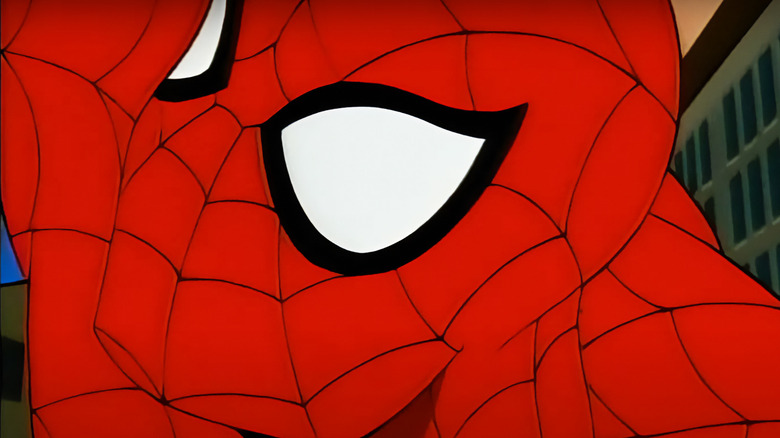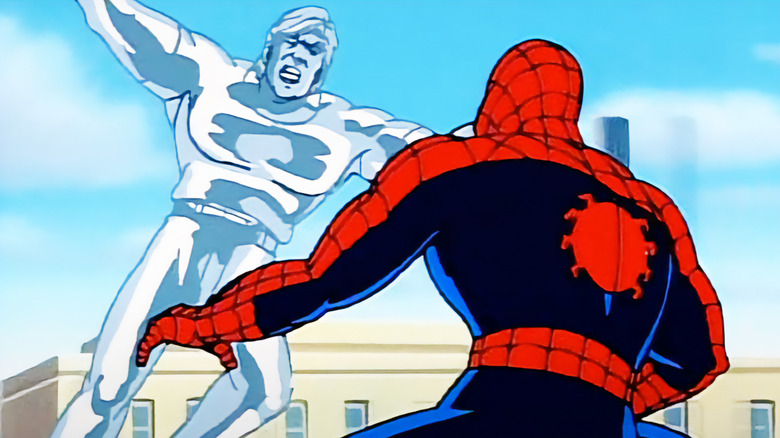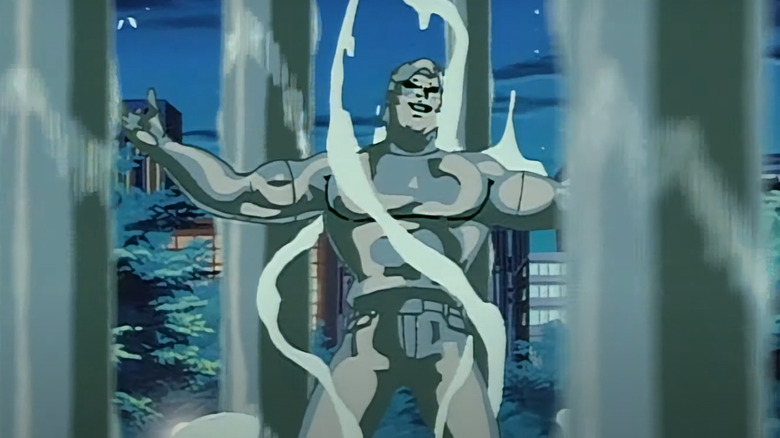James Cameron's Unmade Spider-Man Movie Cost The Animated Series Sandman & Electro
James Cameron really is the king of the box office. With "Avatar: The Way of Water" set to overtake Cameron's own "Titanic" as the third biggest movie of all time, the unstoppable director can claim to have made three of the five most financially successful films of all time. And even though there's simply no way things could have gone better for the veteran filmmaker, I can't help but wish he'd actually made his Spider-Man movie.
Yes, before Sam Raimi introduced us all to Tobey Maguire's Spidey in 2002 and set the standard for Spider-Man films going forward, James Cameron almost made his own web-slinging blockbuster. The director went as far as producing a "scriptment" (script and treatment combined) which has since found its way online. Unfortunately, the whole thing fell apart in 1995 when Carolco, the independent studio behind Cameron's mega-hit "Terminator 2: Judgment Day," and rights-holders to a Spider-Man movie, went bust.
Just imagine what the king of the box office could have done with a Spider-Man movie. It was set to be an R-rated adventure that would have all the hallmarks of a James Cameron action spectacular. Unfortunately, as well as never coming to fruition, it seems the project caused some unintended issues elsewhere while it was in development. Specifically, the excellent "Spider-Man: The Animated Series" was unable to use certain characters due to Carolco holding the rights and Cameron's big plans to use two of Spider-Man's biggest villains in his ill-fated project.
Sandman and Electro were off limits
"Spider-Man: The Animated Series" was almost as seminal a moment in Spidey's cultural evolution as a Cameron movie would have been. Before the character had hit the big screen and gained the widespread recognition he enjoys today, Fox Kids stepped up and gave '90s kids a Spider-Man fix that didn't require them to track down the comics — which in my small English town was a formidable task.
Debuting in 1994, the cartoon series was a refreshingly mature take on Spider-Man that took some of the best storylines from the comics and adapted them for a younger audience without robbing them of their thematic weight. It would run until 1998, and cover all aspects of Spider-Man's universe, condensing decades of storylines into five seasons and even introducing the multiverse in its final season.
But while the show was impressively comprehensive in its scope, it was hampered in some significant ways. Not only did toy sales dictate much of season 1's stories, but the writers would also have to be careful to not upset TV censors, who had strict rules in place to keep kids' programming wholesome. On top of all that, old Jimmy C would make his influence known by forcing producer, head writer, and showrunner to steer clear of certain characters — specifically infamous Spidey villains Electro and Sandman, who Cameron was planning to use as his main antagonists.
Semper was asked about that specific hurdle by the Marvel Animation Age (via DCAnimated), saying, "I never gave Sandman any thought because I just accepted that I wasn't able to use him and that was that." Eventually, once Cameron's film fell through, Semper and his team would introduce Electro to the series. But Sandman remains the only major Spider-Man villain to remain absent from the entire 65 episodes.
Hydro-Man was basically Sandman
Despite not being able to use Sandman, Semper came up with a clever workaround. Hydro-Man was introduced as an alternative in the third episode of the second season, aptly titled "Hydro-Man." Morris "Morrie" Bench first appeared in "The Amazing Spider-Man" #212 back in 1981 but provided an ample replacement for Sandman when it came to Semper's series. As the showrunner explained:
"There really isn't much difference between Sandman and Hydro-Man when you get right down to it. So look at the way I used Hydro-Man and you'll get a good idea of what I probably would have done with Sandman."
Ultimately, Semper felt the villains were, "mostly interchangeable," and that, "the real fun of Spider-Man is the soap opera that goes on in Peter Parker's real life." Much of that might have been down to him being forced to introduce almost every villain throughout season one, which required each episode to be a standalone story rather than the longer narrative arc Semper had planned. By the time season 2 rolled around, however, he was free to indulge his longer storylines and focused much more on Peter Parker's personal developments rather than introducing yet more villains. In that sense, whether Cameron made his film or not, it doesn't seem like it was too big a deal to have to write around Sandman and Electro for the team behind "Spider-Man: The Animated Series." The quality never dipped throughout the show's five-year run, which is why it's great to be able to access the whole thing on Disney+ along with the equally awesome '90s "X-Men" cartoon.


